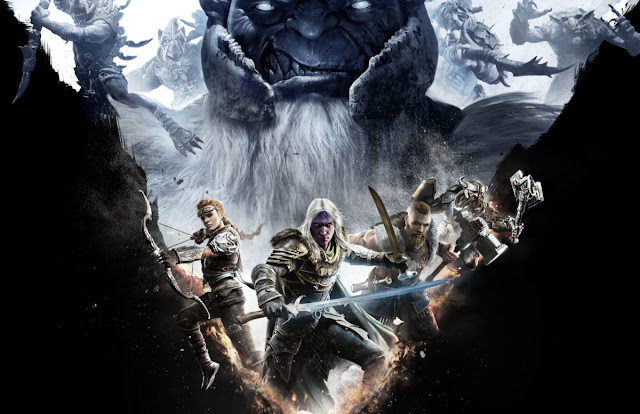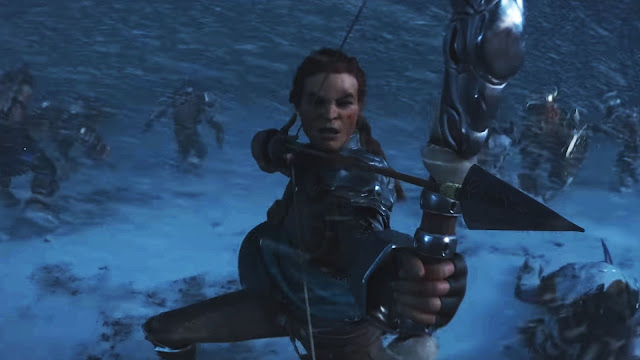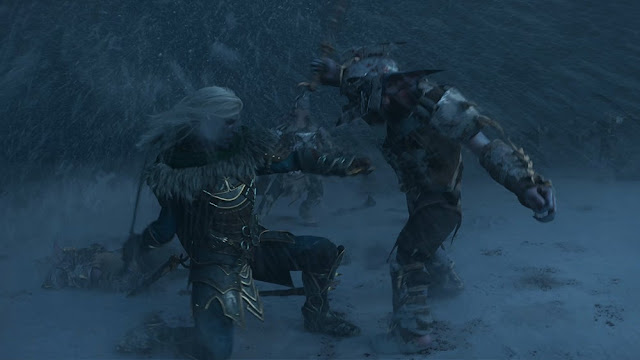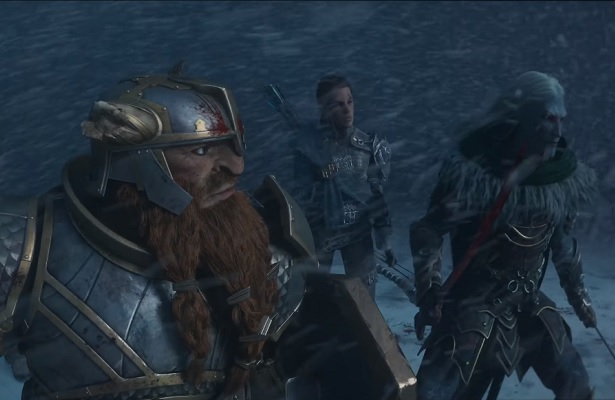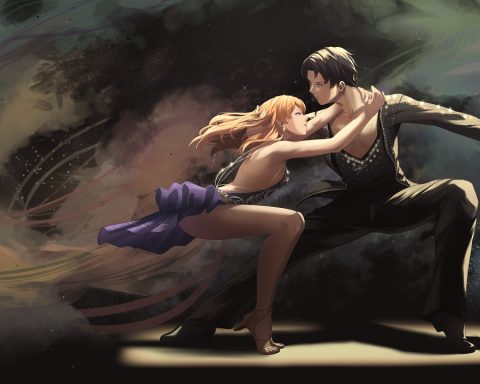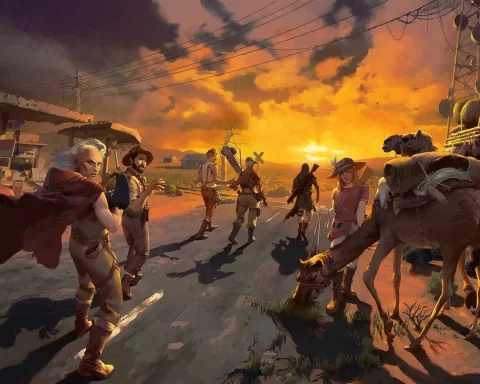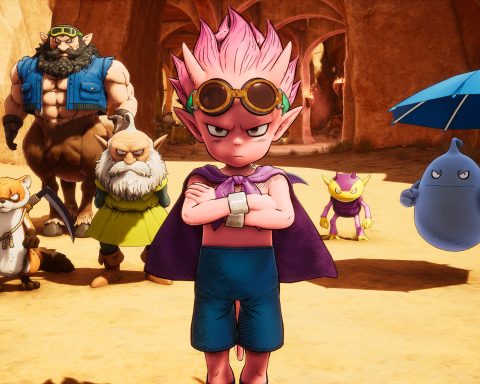Opinion by Matt S.
Late last year, Wizards of the Coast, in collaboration with Tuque Games, announced Dungeons & Dragons: Dark Alliance. As a long-awaited new entry in a beloved action RPG series from the PlayStation 2 era (not to be confused with the likes of Baldur’s Gate, Dark Alliance was more akin to Diablo), Tuque’s announcement had one additional surprise: It would also be about Drizzt Do‘Urden, a renegade Dark Elf and the protagonist of a 30+ book series from author R.A. Salvatore.
Is it really a Drizzt game, or is it cynically using the character, though? In watching the trailer there were a number of red flags that were immediately raised to me, as a deep fan of Drizzt and company. Firstly, the character roster lacks Regis, a non-combatant halfling from the book series, but a critical member of Drizzt’s social group, and a critical part of the collective narrative and themes of the novels. The trailer also failed to show any of Drizzt’s enemies – not the balor, Errtu, the orc king, Obould, Matron Baenre – the leader of the city of Menzoberranzan, which Drizzt fled, and, most importantly, there was not a hint Artemis Entreri, the human assassin and dark mirror to Drizzt.
What we got was a trailer showing some combat and each of the four characters you could play as – Bruenor, Wulfgar, Drizzt and Cattie-Brie – using their special abilities on fodder. I would argue, however, that this has very little to do with Drizzt or Salvatore’s work. Salvatore is no Tolkien and his stories are most assuredly pulp fantasy, but they’re also not mindless action. In fact they are often quite rich in terms of the way they explore the nature of good and evil, the value of companionship, mortality, morality, love, hate, and even more esoteric themes like theology and the impact of nostalgia. Drizzt novels feature action, but they’re as much about the narrative interactions between Drizzt, his friends, and, particularly, the rogue gallery that he squares off against.
Even the game’s tagline from the trailer, “slay together”, does nothing to inspire confidence given that, over and over and over again from the novels we’re told that Drizzt wants nothing but peace, and while he’s quite willing to take up his swords for a good cause, it’s never out of bloodlust.
In interviews, Tuque has been cagey about addressing anything to do with the authenticity of the game to the character and books. “We don’t want to comment yet on which characters from the Companions of the Hall make an appearance beyond Catti-Brie, Wulfgar, and Bruenor,” Kevin Neibert, lead game designer at Tuque games said in an interview with Gizmodo. “Early on in the concept phase of the game, we brought in R.A. Salvatore to discuss potential story ideas and places we could take the characters that differ from what has come before. Obviously, we’re inspired by the 30-plus books and D&D adventures, but this quest is entirely new and unconnected to anything that exists.” (emphasis mine).
Based on that it doesn’t seem like the developers are so interested in telling a story authentic to Drizzt than they are sticking a character model of Drizzt into an action game. I’ve needed to rely on a Gizmodo interview for this piece, because despite having the opportunity to put questions to Niebert and Tuque, those questions went unanswered. Those questions that I wanted to ask were very much from the concern that the game doesn’t seem to be reflective of Drizzt at all. Among other questions, I asked:
1) R.A Salvatore frequently used Drizzt’s various nemesis’ – Artemis Entreri, Jarlaxle, Errtu, Obould, and so on – as a way of deepening Drizzt’s character – showing the reader various shadowy mirrors to Drizzt own internal struggles and fundamental goodness. They’re quite important to the overall fiction, so are we going to see them show up as well?.
2) In the trailer we saw a lot of action, but not much context to it. I would suggest that a big part of Drizzt’s appeal is not his ability to fight, but the stories wrapped around him – how he comes to terms with the world, how he handles the racism he experiences, how he handles his effective immortality when his friends all have much shorter lifespans. What is the team doing to capture and reflect on Drizzt & friends as characters and the themes around them, rather than fighters?
These were questions I put to the development team over a month ago, and despite repeated attempts to follow up, Neibert and Tuque have simply refused to respond.
Video games and licensing
I’m not sure why it was this specific trailer, but it was in watching the Dark Alliance footage, a number of nagging concerns that I’ve had about how developers are now approaching too many licensed video games came to the fore. Increasingly it seems like developers and publishers use the license to sell something, but don’t necessarily care bout making the game suit the license. In other words, they seem to be shoving the license over an existing, proven, gameplay model, whether it suits the game or not.
A few years ago Warner Bros. got itself into a groove creating Assassin’s Creed-likes for the Lord of the Rings property, and it really did feel like the licensed was shoved over the top of a set of pre-existing mechanics – the “best practice” for an open world video game already existed and the Lord of the Rings coat of paint was there to make it superficially different to the other open world video games. Yes, there were some minor differences here and there – like the ability to “possess” the minds of orcs and goblins… but given that that mechanic had very little to do with Lord of the Rings itself it was a feature that worked well, but was superficial to the license. You could have removed the Lord of the Rings license from either of Warner Bros’ two titles in that mini series, and it wouldn’t have mattered for the experience that would have been left.
It’s not just Warner Bros., of course. As much as I love Koei Tecmo’s Musou formula, it too has been shoved into licenses that were arguably inappropriate for the source material. The Heroic Legend of Arslan, for example, is a fantasy novel and anime property that featured both epic battles between armies, and one-on-one duels between heroes. What it did not feature was the one vs. 1000 of the Musou formula. A perhaps even more egregious example is the Berserk Musou game, given that Berserk was almost entirely focused on the story of one warrior – Guts – and the Musou formula calls for players to have a choice of dozens of different characters to play with. Is it easy for Koei Tecmo to produce a Musou title? Relatively so, yes. Is is a formula that can just work for every property? No.
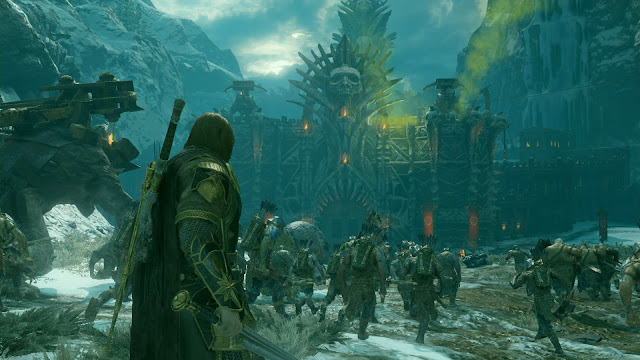 |
| Lord of the Rings: Shadow of War |
There are plenty of other examples. Mad Max mistook the film series’ desolation as an excuse to make an standard open world game. PlatinumGames shoved the Teenage Mutant Ninja Turtles series into its “Bayonetta” gameplay structure. Last year EA released a Star Wars game that cribbed from Dark Souls without necessarily understanding that Dark Souls and Star Wars don’t actually mesh well together. Often these games are enjoyable, don’t get me wrong on that account. But they’re enjoyable because the base game is enjoyable. What they don’t do is work as a “text” from the license. Lord of the Rings isn’t enhanced by being shoved into Assassin’s Creed. Star Wars doesn’t benefit from being Dark Souls.
Of course there are plenty of licensed games from yesteryear in which the license was simply shoved into a game of little relevance to the property – think Superman 64. Significantly, though, the licensed games are being made to much higher production values now, and where stuff like Superman 64 was rightly slammed for being “a licensed game” (a common pejorative back when mid-tier developers were notoriously chasing down every license they could get their hands on), developers and publishers are now getting rewarded for it with both sales and critical response. Rarely is the appropriateness of the genre and type of property a concern when the high budget licensed game is fun anyway. The guiding principle seems to be that as long as the game is fun, the appropriateness of the license to it doesn’t seem to matter.
There are exceptions, and it would be disingenuous to suggest otherwise. In fact, there are plenty of licensed titles where the license has really been thought through and the game built around that license. The recent Spider-Man, for example, really went all out to take the basic principle of an open world game, and restructure it to account for the different way that Spider-Man sees and moves around the world. The Doraemon X Story of Seasons title understood the warm themes of Doraemon and applied them perfectly in parallel to the warm themes of that farming series. Going back to the classics, Goldeneye 007 will forever be remembered as a masterpiece because, while it has aged horribly in the years since to the point of being almost unplayable, it was a game in which the very activity of being a James Bond-like spy had been reflected through the gameplay mechanics. Goldeneye also influenced generations of FPSers afterwards because, in redesigning the genre to suit the license, Rare happened to strike on something both innovative and exciting for players.
 |
| Jedi: Fallen Order |
It’s harder to do what the likes of Spider-Man and Goldeneye did, however. As game development becomes ever-more big business, and the costs of failure becomes ever-more ruinous for the developer and publisher, the idea of taking creative risks and not sticking to best practice is ever harder to sell to the suits that green light projects. At this point game developers know what works in the eyes of players (and what doesn’t), and the licensing over the top is applied as simple marketing. I.e., it helps the game stand out on shelves and get into people’s homes. If players then discover that the game is copy/pasted from previous good ideas, regardless of how appropriate it is to the license, then it’s not something to be too concerned about from the suit-wearing manager’s point of view, because how often do people complain about playing stuff that is entertaining, regardless of its underlying quality?
I’d suggest that it does matter, however, as licenses are an excellent way to find new approaches to game design (Goldeneye) and differentiate from the increasing homogenisation of the rest of the market (Spider-Man). This Drizzt game by Tuque Games should not play like yet another loot-heavy action RPG. Given the characters are all partly defined by the incredibly powerful magical weapons they already own, there shouldn’t even be loot in the game. It should be a Drizzt Do’Urden game, with all that that entails, and if that means the developers need to think a little differently about how they approach the mechanical side of the action RPG, so be it.
I wouldn’t count on it, though. I may end up pleasantly surprised, but I would very much expect this Dark Alliance game to have very little meaningful to do with Drizzt.
– Matt S.
Editor-in-Chief
Find me on Twitter: @mattsainsb

